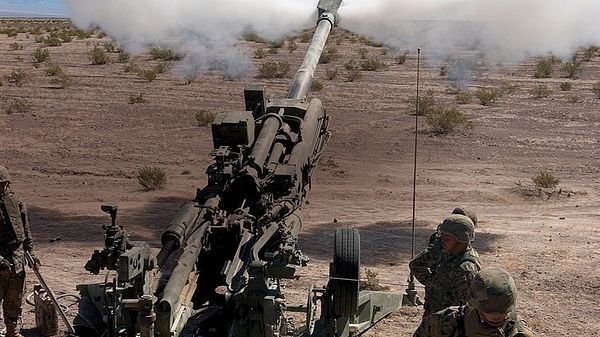The Comptroller and Auditor General of India has pointed out that replacing old artillery guns with modern ones has been going at a “slow pace” for over 20 years. On Monday, the Parliament heard the Report of the Comptroller and Auditor General on Union Government (Defence Services) – Army and Ordnance Factories.
“Report No. 6 of 2023, Union Government (Defence Services) – Army and Ordnance Factories for the year ended March 2020, was laid on the table of Lok Sabha and Rajya Sabha,” the audit body said in a statement.
This report shows the results of an audit of the transactions for the year ending March 2020 for the Department of Defence, the Indian Army, the Inter-Services Organisations like Military Engineer Services (MES), Canteen Stores Department (CSD), etc., the Defence Research and Development Organisation (DRDO), and the Ordnance Factories under the Ministry of Defence.
The CAG has also talked about its findings in other areas, such as the purchase of an artillery gun system.
“The process of replacing the old artillery guns with new, high-tech guns has been moving slowly for more than 20 years.
“Only three of the six plans to buy or upgrade artillery guns turned into contracts. This is only 17% of the total number of artillery guns that were planned to be bought. At different points in the acquisition process, there were delays,” the statement said.
Requests for Proposals (RFP) were sent out, pulled back, and sent out again because “vendors did not respond well or did not meet the quality requirements,” it said.
It also said that the field evaluation process was not standardized in terms of the amount of time it took.
The delays show that the ministry and Army headquarters need to make sure that the quality requirements for buying weapon systems are realistic by basing the whole process on a thorough technology scan and coming up with a way for field and staff evaluations to happen quickly, the statement said.
Among other things, the statement from the CAG said that an audit of 13 of the 62 Cantonment Boards (CBs) in the country found “several gaps” in the public services that the boards offer to their residents.
It said that only one CB had a working sewage treatment plant and that five CBs had solid waste processing plants for getting rid of solid waste in a scientific way.
It said that 11 CBs didn’t have enough medical supplies to help their residents.
Two CBs were heavily dependent on grants-in-aid. It said that in the selected CBs, there were not enough funds to meet the needs for creating capital assets.
Also, Rs 2461.16 crore was owed by the Defense Services and other central and state government departments for municipal taxes and service charges that these CBs had collected. This was said in the statement.
In May 2003, work also began on three sets of twin Igloos, four stores for explosives, and other related projects. But because the contract documents were not clear, which led to a dispute with the contractor in May 2007, the assets could not be built until December 2013.
“Further, even though Rs. 4.01 crore was spent, the Igloos were not built with the right kind of concrete, and the Igloos’ net explosive content was lowered.
“Also, only one Igloo was used in June 2022, and it had a lot of leaks and seepage during the monsoon. So, building Igloos to store ammunition didn’t work out the way it was supposed to,” the statement said.
Snow and Avalanche Establishment (SASE), which is part of DRDO, is in charge of helping the services predict avalanches and giving advice on how to stop them.
“SASE was aware in 2017 that there was a need to increase the number of Manual Observatories (MO) and Automatic Weather Stations (AWS) to improve the accuracy of weather forecasts, but a complete plan of action had not yet been finalized,” the report said.
In October 2007, the Ministry of Defense gave permission for a new Ordnance Factory to be built in Korwa. This factory will make two types of carbines: Close Quarter Battle (CQB) carbines through import with Transfer of Technology (ToT) and Protective carbines through local production.
“However, neither of the carbines could be made (March 2022) according to the Army’s requirements, even though the project had been approved 14 years earlier,” it said.
“Ordnance Factory Khamaria (OFK) was unable to test the locally made Arming Device of an ammunition even after 17 years of the Transfer of Technology (ToT) contract with the OEM. This was because getting the Flight Data Recorder took more than 10 years.
“Even though OFK didn’t have the right infrastructure for testing, they bought a lot of raw materials and made a lot of Arming Devices, which wasted Rs 77.11 crore.” This is what the statement said.
It said that the Canteen Stores Department Head Office (CSD HO) uses old software to process bills for payment to suppliers.
It said that because the old software was still being used and there weren’t enough controls, the same bills could be entered into the system more than once. This led to “several instances of double payments” to suppliers.
